Theme Park was a groundbreaking park building and management sim that was released on PC in 1994 and ported to various consoles. The game’s high sales in Japan led to the creation of Shin Theme Park, a Japan-exclusive, improved version for the PlayStation 1 and Sega Saturn in 1997. In this article, we will delve into Theme Park’s appeal at the time, and explore the improvements, additions and cultural changes that were made to the expansive Japan-only remake.
Note: The PlayStation 1 versions of Theme Park (PAL) and Shin Theme Park (NTSC-J) were used for this comparison.
How did Theme Park break new ground in 1994?

The original Theme Park’s main selling point was not only the ability to freely create the amusement park of your dreams in bright and colorful cartoon graphics, but also to be able to stroll through it. While building and operating your park was handled in 2D overworld perspective, the PlayStation 1 version of Theme Park let you switch to a 3D first person view to explore your park layout and ride the attractions. This 3D aspect was a big part of the game’s appeal in 1994, as was the ability to build your own roller coaster ride from scratch. The game was so successful that it was eventually ported to almost every console around in the mid to late 90s.
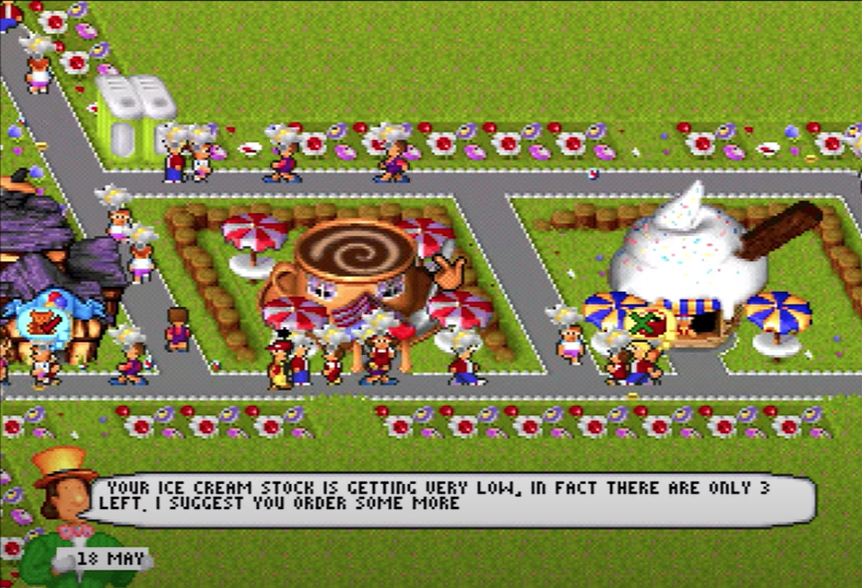
The history of UK developer Bullfrog’s Theme series and the various iterations of Theme Park are quite complex. Sitting right between the 1994 original and the 1999 PC/PlayStation reimagining Sim Theme Park/Theme Park World, is the unusual 1997 Japanese-only remake Shin Theme Park (New Theme Park). Although it was developed by a Japanese team under EA, it stays true to series creator Peter Molyneux’s vision for the original: A fun game where players can build their dream theme park while discovering how much work it takes to run a successful amusement park business (Source: PC Gamer magazine, December 1993).
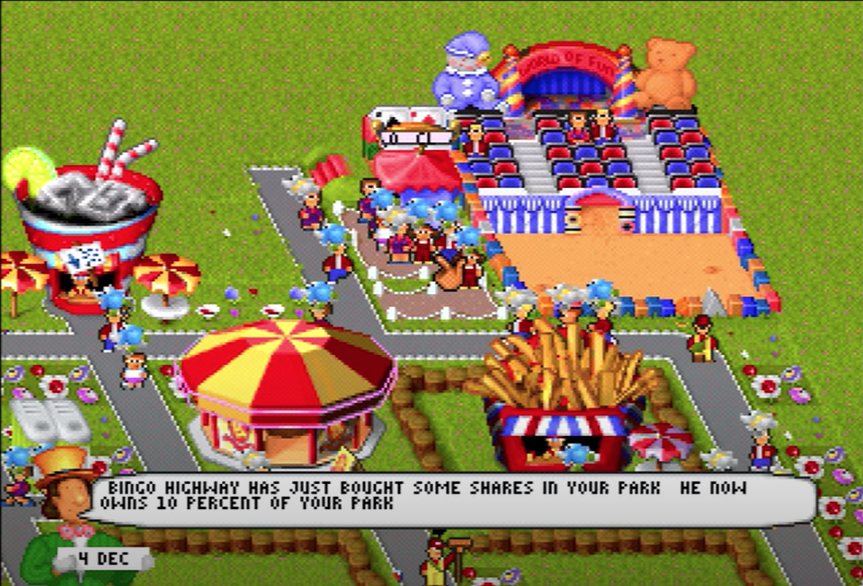
Accordingly, both Theme Park and Shin Theme Park have different play modes and difficulty levels. The higher the difficulty level, the more management features are available for you to juggle. At hard or advanced difficulty, you will have to strategically research the most appropriate new rides and shops for your park, buy and sell stocks and shares, order in products to your warehouse, train staff, negotiate pay rises and many more things, all while building an attractive and successful park to rival Disneyland.
From cotton candy-like cherry trees to Ninja Mansions: Shin Theme Park adds Japanese flavor to the UK original
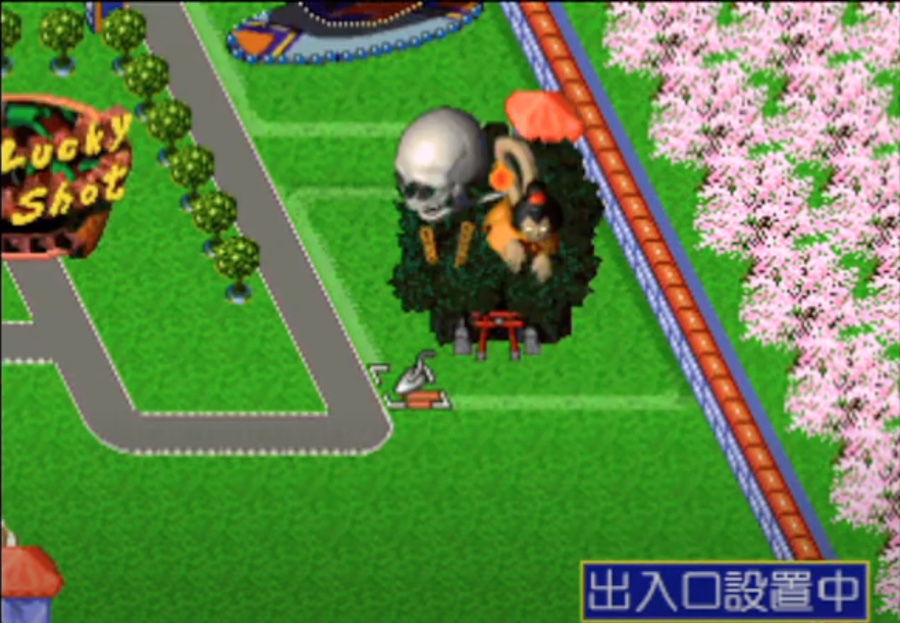
First, Shin Theme Park makes many cosmetic additions that brighten up the game and add variety. In the original PC and PlayStation editions of Theme Park, you would always start off with the same green field to build on (regardless of which country you chose) and the basic appearance of the field, rides and shops was unchanging. Shin Theme Park shakes this up with some stages having raised areas that you need to build steps up to, and varies the ground color in some locations (Egypt now has a sand-colored area for you to build on). Some of these landscape changes were already present in the SNES and Megadrive ports of the original game (Source: CVG magazine, April 1995).
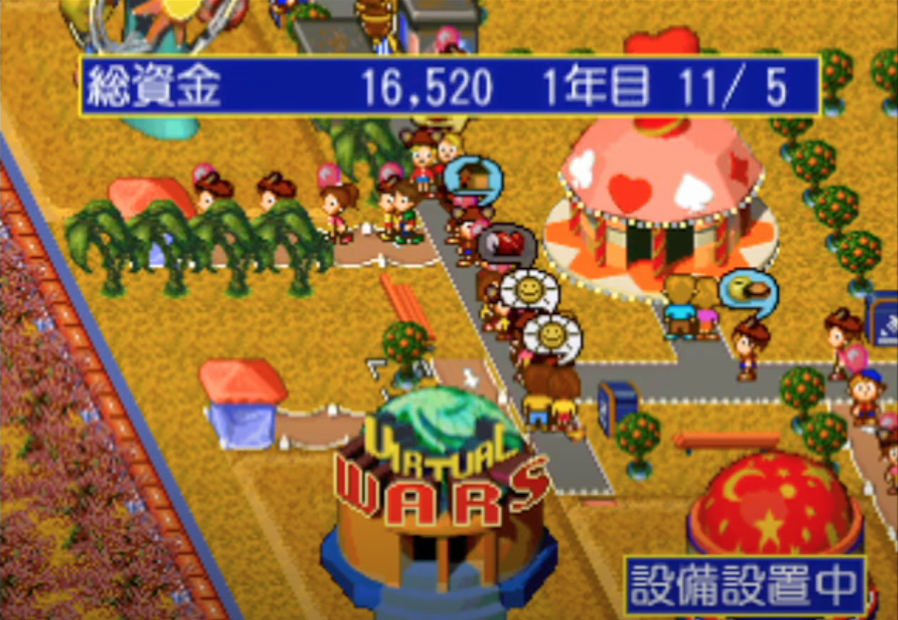
However, one cosmetic addition unique to Shin Theme Park is the seasons, which really give a sense of time passing. In spring, your park grounds and cherry trees will turn bright pink with petals, summer is green and lush, fall comes with the requisite maple leaves and winter blankets your park in snow. The game also adds moments of nighttime with certain rides and shops illuminated in lights.

Shin Theme Park also adds some new rides and shops to the game, while reworking or scrapping others. For example, the original game’s starter ride, the Bouncy Castle, which is useless in terms of both ride enjoyment and durability, has been removed. Other rides have been redesigned; the Ghost House now has a more Japanese design, with a youkai demon and torii shrine gate on the front of the ride. The game also added a ton of rides and shops that are unique to each country stage, including a Ninja Mansion, Oedo Castle and an Udon shop for Japan, a crepe shop for France, and a curry restaurant for India.
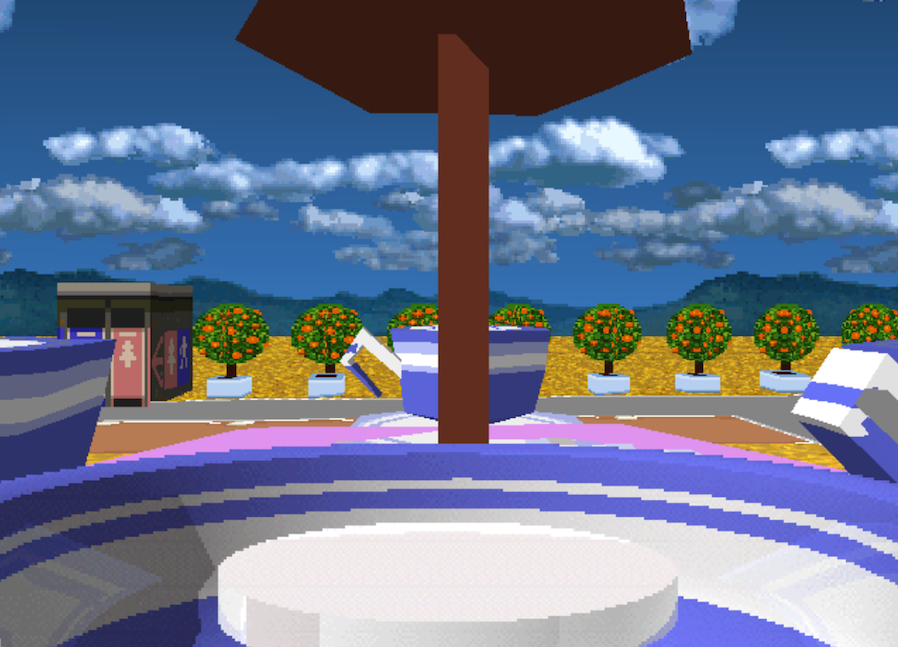
Many of the rides also have brand new FMV sequences that allow you to experience riding the attraction. The option to walk around your park in 3D remains unchanged, though the cartoon-style sprites and graphics in the overview of your park are more detailed than the original 1994 release.
Improved mechanics for attracting the right crowd
Shin Theme Park adds two mechanics that allow you to better target your park to certain types of customer. First, is the addition of events. The game lets you choose up to three events to be held in your park each month, and by building an event hall, you can hold an even bigger range of events focusing on different types of customer. For example, you can show romantic movies to attract couples or invite a singer with a big teen fan base to do a concert. You can also hold seasonal events, with the New Years Festival in January and the firework festivals in summer being particularly evocative of Japanese traditions. A lot of the other events, like the carnival and dream parades, have a more international feel.
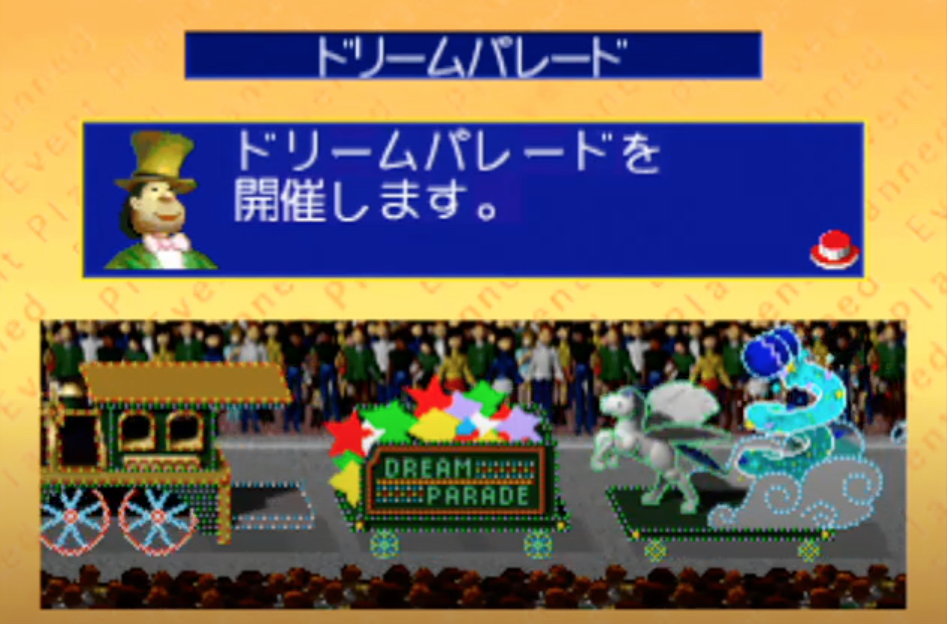
The second new mechanic is advertising. You can not only spend money on newspaper, magazine, radio and TV ads for your park, but you can also raise funds by having other companies put up big posters in your park. This seems like easy money, but other companies’ advertisements can create a negative image of your business among customers. This is especially true if you place lucrative ads for beer and cigarettes in your family-friendly attraction! The media will also report on your park- have a beloved ride and it may get featured on TV. Conversely, if a bunch of thugs enter your park and start beating up the customers, you will be facing a very different kind of publicity.
According to the game’s manual, this targeted approach (that wasn’t present in the 1994 original) is now a key factor in building a successful business. This feeds nicely into the title’s reworking of the system for researching new rides to add to your park. Instead of pumping money into research to receive new rides at random, you can now select rides you wish to unlock based on the type of ride and its appeal- this will lead you down a specific flowchart of rides that can be unlocked for the park you are currently building. The game features 60 attractions but due to the branching research system, it is impossible to unlock them all in one save game.

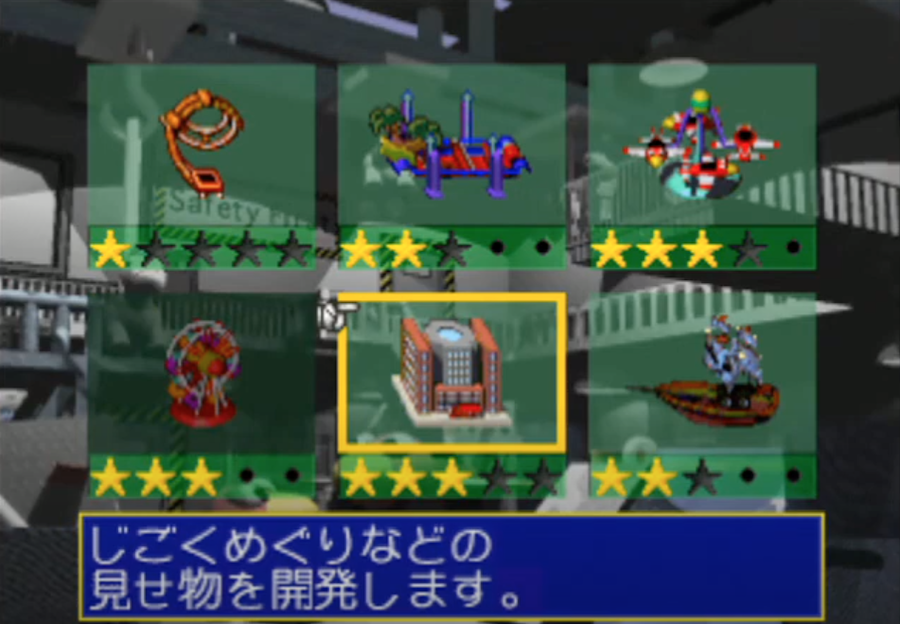
Balancing the books is still fiendish
Modern management sim and city builder games like Cities: Skylines and Two-Point Hospital tend to be reasonably generous with the money and guidance they give to the player. The 90s Theme Park games, on the other hand, give you simple advice but expect you to manage your thin profit margins using the various options available to you. Even if you have played Theme Park or Shin Theme Park many times, a small change can quickly have you scrambling to save yourself from debt. One aspect that can soon have you trying to raise funds is if you accidentally negotiate too high a price increase. Which brings us to Theme Park’s negotiation mechanic.
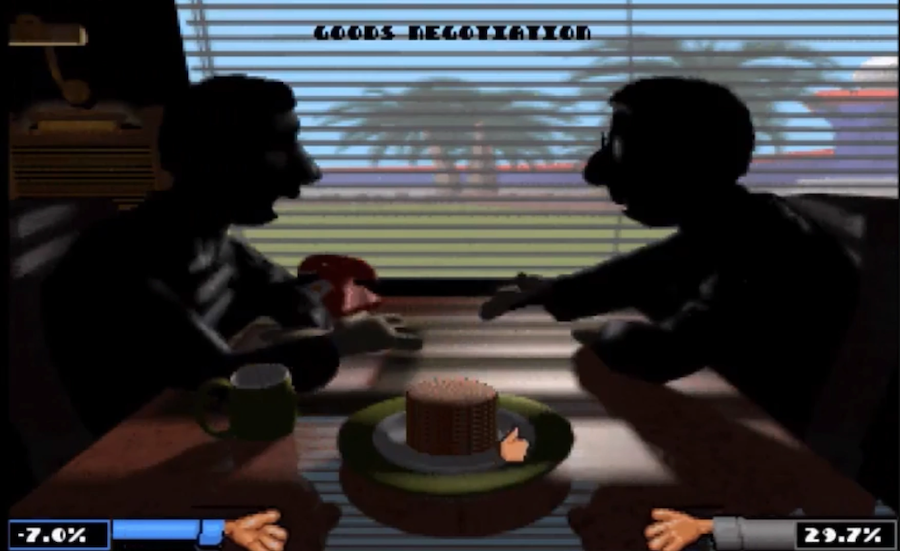
The game will sometimes go into the negotiation screen, where you must agree on staff salary adjustments or wholesale prices for each food and drink shop. In both versions of this game, this is a timed event where your arm and your partner’s arm are depicted at the bottom of the screen. The percentage of decrease or increase is shown on each arm and you must move the arm back and forth across the screen with the left and right directional buttons until you agree on a percentage and move in for a handshake. This mechanic does a good job of capturing the to-and-fro of a negotiation, and there’s just one difference between the Japanese and English versions of the game. In the English version you must complete the negotiation before the cookies on the table disappear. In the Japanese version, you must reach an agreement before the cigarette burns down to the butt.

Better rollercoaster building
The rollercoaster building part of the game has been improved in Shin Theme Park, letting you safely construct crazier tracks. In the original, people would go flying off the rollercoaster and sometimes right into your screen if you made the ride too steep. Naturally, they would be unhappy when they reached Earth again, and repeated incidents would soon have your park’s reputation plunging in a similar manner. It seems that in the Japanese-only remake, it is impossible to cause such injury to your patrons. I tried to build a death trap of a coaster in Shin Theme Park but all the people remained safely on board despite my best efforts. As well as roller coaster add-ons like the Loop-the-Loop and Corkscrew, which were available in the original game, a Splash Mountain section of track can also be researched in Shin Theme Park.
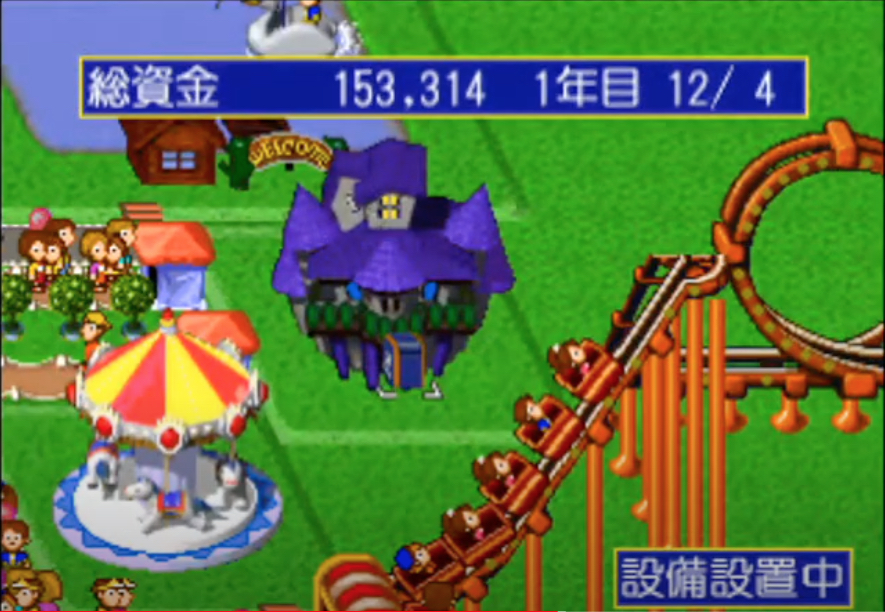
Switching up the sound and humor
On the negative side, Shin Theme Park removes the theme songs for individual rides in favor of giving the player a choice between five repetitive tunes that play in your park. The original 1994 PlayStation release of Theme Park had dynamic music- it would play the song for each ride as you scrolled over them, giving you a sense of wondering through your creation. To counterbalance this, the parks in each country now have one unique theme that is based on that country’s traditional music, and the meditative tune for the Japan stage being a particular stand-out.
Shin Theme Park keeps some of the UK original’s silly humor (the motorbike gang thugs have amusingly adorable names) but takes out some of the more puerile elements. The Japan exclusive removed customer vomiting and its accompanying sound effect. In the original, it was all too easy to end up with barfing customers everywhere if you built a food shop near a fast ride- leading your speakers to bombard you with the unpleasant noise. In Shin Theme Park, the repetitive sound effect you are most likely to hear is the ker-ching of making money.
Although the genre of theme park construction and management sim would later be picked up by the Rollercoaster Tycoon series (1999 to present), Theme Park and its remakes provided solid foundations for modern simulation games. Their graphics may be dated but their complex and varied business management mechanics make them worth a play today for those who want more of a challenge.
Shin Theme Park (1997) is available on PlayStation 1 or Sega Saturn disc in Japan.

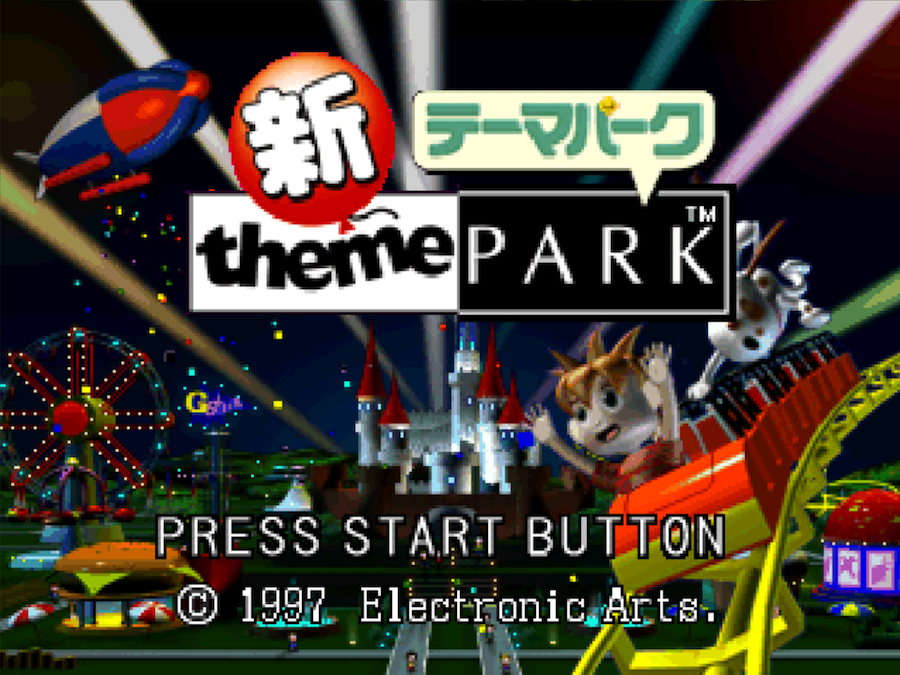


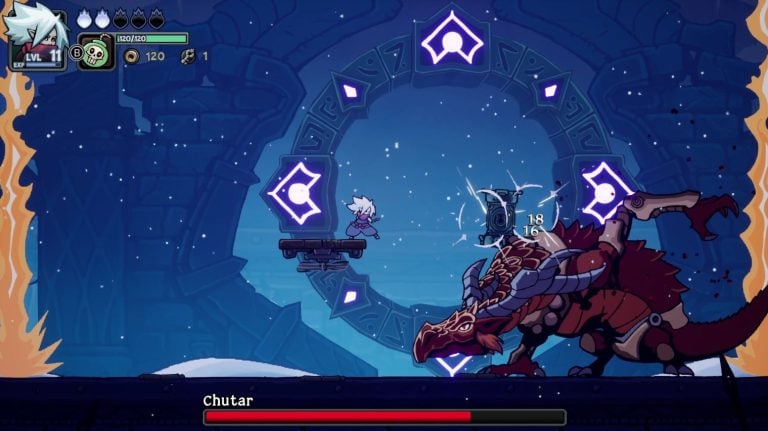

I have often thought one of the unique benefits of the Theme games (especially park and hospital) is how they are fun ways to train budding entrepreneurs and service managers. Thanks for this refreshing article – hard to think of any new games these days that are ‘business reality’ based.